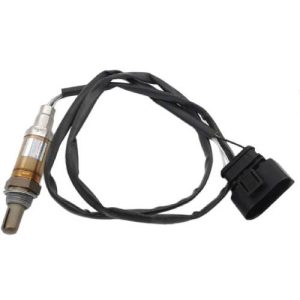Your cart is currently empty!
When Should the Oxygen Sensor Be Replaced?How do Oxygen Sensor Be Replaced
As a reputable voice in the realm of automotive news, we delve into the intricate topic of oxygen sensor replacement. This article is dedicated to deciphering when should the oxygen sensor be replaced and providing insights into the meticulous process of executing this crucial maintenance task.
When Should the Oxygen Sensor Be Replaced
Understanding the optimal time to oxygen sensor be replaced is essential to maintain performance and emission control. Here are key indicators suggesting it might be time for replacement:
Mileage Milestones: Oxygen sensors typically have a lifespan of around 50,000 to 100,000 miles. Check your vehicle's manual for manufacturer recommendations.
"Check Engine" Light: If the "Check Engine" light illuminates on your dashboard and diagnostic scans reveal oxygen sensor-related trouble codes (DTCs), replacement might be oxygen sensor be replaced.
Poor Fuel Efficiency: A decrease in fuel efficiency could indicate a malfunctioning oxygen sensor, as it influences the air-fuel mixture and combustion efficiency.
Emission Test Failures: Failed emission tests often point to a faulty oxygen sensor that needs replacement to restore proper emissions control.

How Do Oxygen Sensor Be Replaced
oxygen sensor be replaced requires attention to detail and the right tools. Here's a concise guide on the replacement process:
Safety Measures: Ensure the vehicle is parked on a level surface and the engine is turned off. Disconnect the negative terminal of the battery for safety.
Locate the Sensor: Refer to your vehicle manual to locate the sensor. Oxygen sensors can be found in various positions in the exhaust system.
Sensor Removal: Use a wrench or socket set to carefully remove the sensor. A specialized oxygen sensor socket might be required.
Oxygen Sensor Be Replaced: Install the new oxygen sensor by threading it into the appropriate socket. Be cautious not to overtighten.
Reconnect and Test: Reattach any wiring or connectors. Reconnect the battery and start the engine. Clear any DTCs and check for proper functionality.
Conclusion
When Should the Oxygen Sensor Be Replaced?In conclusion, understanding the signs of an aging or malfunctioning oxygen sensor is crucial for maintaining optimal vehicle performance and emissions control. By identifying key indicators and adhering to replacement timelines, you can ensure your vehicle operates efficiently and in compliance with environmental standards. Should replacement be necessary, following the recommended steps guarantees a smooth process. As responsible vehicle owners, staying attuned to the needs of your Oxygen Sensor Be Replaced contributes not only to your driving experience but also to a cleaner and greener automotive landscape.






Leave a Reply